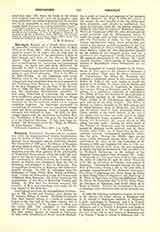

Besancon (VESONTIO), Archdiocese of, coextensive with the departments of Doubs, Haute-Saone, and the district of Belfort. Few nineteenth-century dioceses have undergone similar territorial changes. The Concordat of 1802 gave the Diocese of Besancon all those districts which, in 1822, constituted the Diocese of St.-Claude. In 1806, Besancon was given jurisdiction over the three parishes of the principality of Neufchatel (Switzerland) which fell under the control of the See of Lausanne in 1814. In 1870, after the annexation of Alsace-Lorraine by Germany, the district of Belfort was withdrawn from the See of Strasburg and attached to that of Besancon. The metropolitan jurisdiction of Besancon also underwent singular changes. In 1802 its suffragans were the Bishoprics of Dijon, Autun, Metz, Nancy, and Strasburg. Under the Restoration, Dijon and Autun were withdrawn from Besancon, the latter becoming the metropolitan of the Sees of Saint-Die, Verdun, and Belley. In 1874, after the German conquest, the churches of Metz and Strasburg were under the direct control of the Holy See.
Local legends attribute the evangelization of Besancon to Sts. Ferreol and Ferjeux, sent thither by In 1899 the following institutions were to be found. St. Irenieus, Bishop of Lyons. Duchesne has proved in the diocese: 15 infant schools in Besancon and that these legends belong to a chain of narratives forged in the first half of the sixth century and of which the “passion” of St. Benignus of Dijon was the initial link. The catalogue of the earliest bishops of Besancon is to be read with caution. The first bishop known to history is Celidonius; other incumbents of the see were St. Rothadius, a monk at Luxeuil and organizer of the monastic life; St. Donatus; St. Hugh I (1031-67), prince of the empire, the real founder of the city whose markets, commerce, and schools he established; Cardinal de Granvelle (1584-86), the famous minister of Philip II, who built the palace of Besancon; Antoin Pierre de Grammont (1662-98), who strenuously opposed Jansenis, and the Reformation, strove to uplift the clergy and, in 1691, transferred to Besancon the University of Dole; Le Coz (1802-33); Cardinal Mathieu (1834-75), who distinguished himself by is defense of the temporal power, and was a member of the “Opposition” at the Vatican council. He opposed strenuously in his diocese the “simultaneous churches” which sprang up throughout the district of Montbeliard where Protestants are numerous.
The monastery of Luxeuil, founded by St. Columbus (d. 615), gave to the Diocese of Besancon a series of saints. First came the direct successors of St. Columbanus; the Abbot of St. Eustasius who founded a celebrated school in this monastery; the Abbot St. Valbert who sent monks to found the Abbeys of St.-Valery, St. Omer, and St. Bertin, and died in 665; the Abbot St. Ingofroid; St. Donatus, who became Bishop of Besancon; and St. Ansegisus, author of a celebrated collection of capitularies. The Abbey of Lure was founded at the beginning of the seventh century by St. Deicole or Desle, disciple of St. Colmbanus; later its abbots were princes of the Holy Empire. The Abbey of Baume les Dames, founded in the fifth century; at the end of eighth century there was built near it an abbey for Benedictine nuns, members of the nobility. During the Revolution, the superb church of this abbey was laid waste. Among the other saints of the Diocese of Besancon may be mentioned the hermit St. Aldegrin (tenth century), and St. Peter Fourier (1565-1640), one of those who, in the seventeenth century, inaugurated systematic education for girls. During the Middle Ages several popes visited Besancon, among the Leo IX who consecrated the altar of the old Cathedral of St. Etienne in 1050, and Eugenius III, who in 1148, consecrated the church of St. Jean, the new cathedral. A council was held at Besancon in 1662, presided over by Frederick Bararossa, in the interest of the Antipope Victor against Pope Alexander III. Guido of Burgundy who was pope from 119 to 1123 under the name of Calixtus II, and the Jesuit Nonnotte (1711-93), and adversary of Voltaire were natives of Besancon. The miracle wrought through the Sacred Host of Faverney, during a fire in the year 1608, is annually commemorated by elaborate ceremonies. The places of pilgrimage are: Notr Dame d’Aigremont; the pilgrimage of St. Pierre of Tarentaise at Cirey-les-Bellavaux, where St. Pierre de Tarentaise died in 1174; Notre Dame des Jacobins at Besancon; and Notre Dame de la Motte at Vesoul. Parts of the Cathedral of St. Jean at Besancon were erected as early as the eleventh century.
In 1899 the following institutions were to be found in the diocese: 15 infant schools in Besancon and 35 in Vesoul; 1 deaf-mute institute in Besancon and 3 in Vesoul; 2 protectories in Besancon and 1 in Vesoul; 2 hospitals and hospices in Besaoncon and 8 in Vesoul; 12 communities for the care of the sick in their homes at Besancon and 8 in Vesoul; 1 house of retreat in Besancon, and 1 in Vesoul; 3 homes for the aged in Besancon; 1 infant asylum, 1 boys’ orphanage, and 4 gratuitous industrial schools in Vesoul, all conducted by nuns; 1 deaf-mute institute and 1 boys’ orphanage in Besancon conducted by brothers.
In 1900 the diocese had the following religious orders, Men: Capuchins, Eudists, and Marianists at Besancon, and Trappists at Notre Dame de la Grace de Dieu. Women (purely local orders): Sisters of Charity of Besancon, nursing and teaching, founded in 1799; Sisters of the Divine Providence of Frasne-le-Chateau, teaching, founded in 1780; the Daughters of St. James, nursing sisters with a mother-house at Besancon. At the close of 1905 the Archdiocese of Besancon had 657,773 inhabitants, 60 pastorates, 814 succursal parishes (mission churches), and 97 curacies.
GEORGES GOYAU

